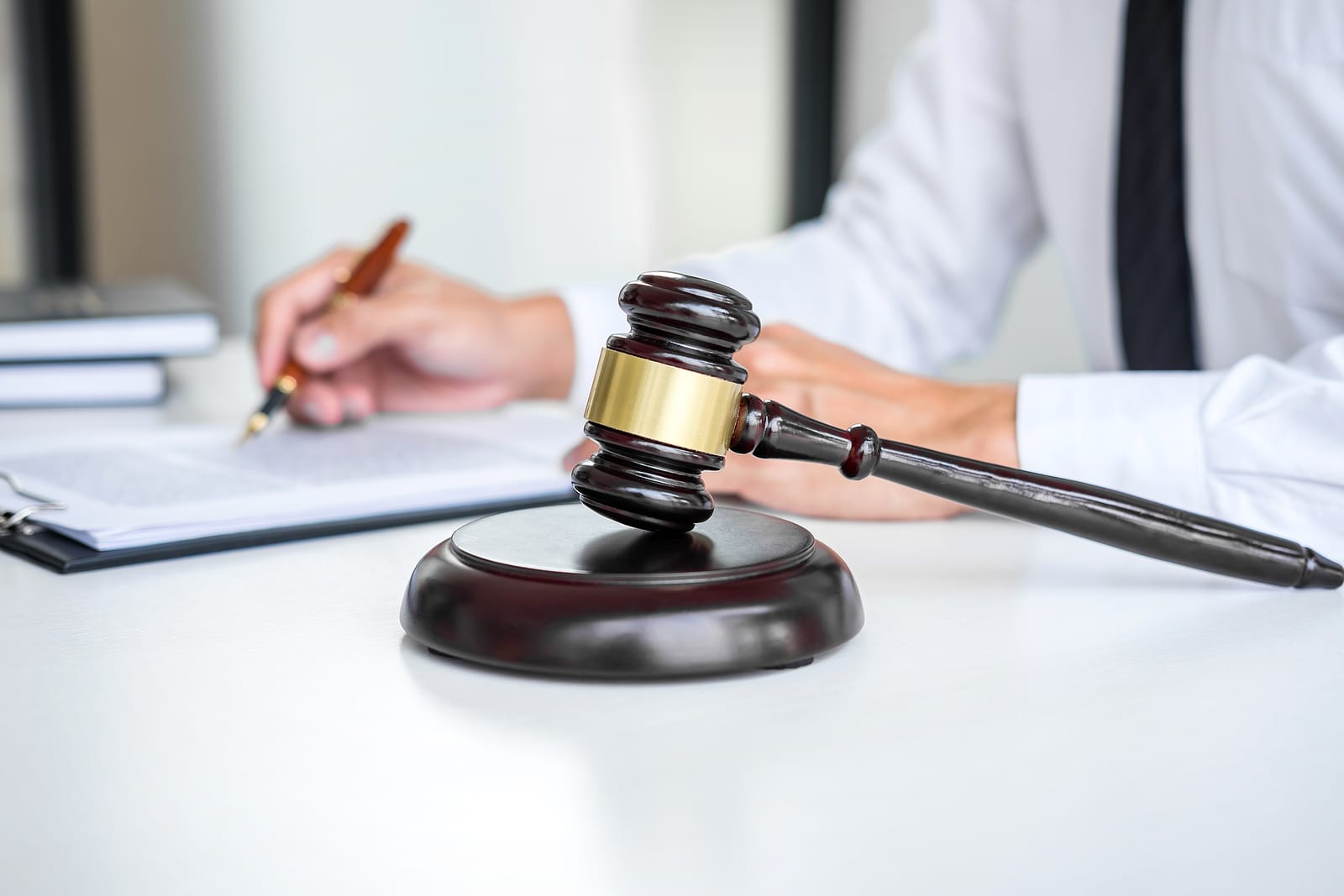When witnessing or hearing about an injustice, shocking behavior, personal injuries and/or wrongful death, it is common to hear people say that “Someone ought to sue,” or that “someone should pay.” As noted in a previous post, recent cases involving the Capital riots have further highlighted issues of both civil and criminal liability: Who is to blame? Who is responsible? Who can be criminally charged? Can members of Congress sue? Can private individuals sue? And as the ultimate question encompassing all these others, what we really want to know as a country is: “Who can be sued?”
The old adage of attorneys is that anyone can be sued by anyone else for anything. Someone can always bring a lawsuit and make a claim against others. For example, think about the recent Gorilla Glue case that is in the news right now where a person sued because she put Gorilla Glue in her own hair, which did not come out. However, legally, and realistically, not everyone is entitled to do so. If individuals went to court every time they see a wrong or a perceived wrong, courts would be overwhelmed with trivial cases. Courts have accordingly provided that, even before they will hear a case, the parties must establish that they have a right to be there. This limitation is embodied in one of the most important and arcane aspects of the law that is known as “standing” to sue.
This legal concept of “standing” is based on a number of elements:
- The Plaintiff must have been injured;
- The Plaintiff must have been protected by a legal right or rule;
- The Plaintiff must sue in the right court; and
- The Defendant’s actions must have caused the Plaintiff’s injuries
In the case of the Capital riots, these issues can and will determine who can sue whom and where they can be sued.
1. The Plaintiff must have been injured.
The person who brings a lawsuit must have been injured in some way. You cannot just be mad and bring a lawsuit because you don’t like the way someone handled an issue. In the case of the Capital riots, simply disliking the way the Capital Police handled the riots does not allow an individual to sue the Capital Police Department. Similarly, just because someone does not like what Trump said around the time of the riots does not mean that person can sue President Trump. The person or people who sue must be those who were actually injured in some way.
To establish what lawyers call “standing,” courts require individuals to demonstrate that they have concrete particularized damages. Normally we define injuries physically, because this is the most easily definable and most easily visible type of injury. It is easy to see that someone has been injured if they have been to a hospital, gotten stitches, broken a bone, or otherwise received wounds that are visible by the naked eye or through digital imaging.
Other injuries that are more easily defined and visualized are lost wages. If the plaintiff had to stay out of work for several days because of the “incident,” then the payment she lost from not working could be reimbursed as a reasonable injury suffered by a plaintiff. Such lost wages might further be associated with physical injuries. For instance, a plaintiff who broke a wrist and then could not work for days or months afterwards because she could not use their hand would have a claim for lost wages in additional to reimbursement for medical bills.
Plaintiffs have a harder time bringing lawsuits and/or recovering any money from a lawsuit if their injuries are not physical or monetary in nature. In other words, American courts try to stay away from theoretical cases or hypothetical injuries, which we also call “speculative” injuries. They rarely deal with “what ifs” and they don’t like attenuated causation.
Moreover, as upset as one might be that a friend has been badly hurt in an accident involving someone else’s negligence or wrongdoing, it is almost always the responsibility of the actual person injured, to file a suit alleging such behaviors. This is because courts look for concrete injuries to specific individuals rather than generalized claims that apply relatively equally. On February 16, 2021, the NAACP filed a lawsuit against President Trump, Rudy Giuliani, the Proud Boys and Oath Keepers, which some members of Congress have joined. Although one need not doubt that many Congressmen and Congresswomen suffered terrible fear during this attack, the members of Congress may find that specific monetary damages might be quite difficult to document and prove.
As we reflected in our prior article, the family members of law enforcement officials who were killed during the riot of January 6, 2021, could sue on behalf of the slain officers. Death is the ultimate injury, and that injury can easily be proved.
2. The Plaintiff must have been protected by a legal right or rule.
Even individuals who can show that they have suffered a specific injury sometimes find that courts are not open to them.
Not every injustice is considered to be a legal wrong, and because governments in the U.S. are limited, they do not address every grievance or perceived grievance. An employee of a mom-and-pop business or a small farm may fall below the radar if their employers engage in behavior of larger corporations that would have greater effects on interstate commerce and that are thus subject to greater regulations.
Let’s take an allegation for employment discrimination as an example. If someone has been denied employment on the basis of age, race, religion, or gender, they could have standing to sue their employer, because they had a constitutional right (recognized by the courts and the Constitution) not to be discriminated against for these protected reasons. However, if a company denies someone employment based on the school the applicant attended, the grades the applicant received, or the behaviors the applicant used during an interview, the applicant would not have standing to sue for employment discrimination. To the best of our knowledge, there are no rights to obtain a job or be considered for a job based on the school one attends, the grades one did or did not make, and based on one’s behaviors during an interview.
Similarly, with regards to the Capital riots, plaintiffs’ rights must have been violated or their injuries must have been caused in violation of a law or legal concept. Civil wrongful death claims could be valid because people have the right to live. If their lives are taken from them by other peoples’ negligent, reckless, or illegal actions, then those people (or really, their surviving family members) have the right to sue. Those who were physically injured as a result of someone else violating the laws could sue. This would include suing people who were breaking and entering the Capital, destroying property at the Capital, and trespassing at the Capital, because each of these acts is criminal in nature. If the people committing these crimes injured someone during these activities, then they could be held responsible for a plaintiff’s injuries.
With regard to the recent NAACP lawsuit, these plaintiffs are suing the political defendants under a specific federal statute – 42 U.S.C. 1985, otherwise known as the “1871 Ku Klux Klan Act.” They allege that President Trump and others violated this statute, which prevents people from using violence to intimidate politicians in and during the carrying out of their political duties. The plaintiffs appear to have standing to sue based on the use of this specific federal statute. Nonetheless, even though the plaintiffs have a specific statute they can use to sue the defendants, these plaintiffs may still have trouble actually recovering something from this lawsuit, because their injuries are more speculative in nature as discussed in the prior section.
3. The Plaintiff must sue in the right court.
Even if a plaintiff can show she suffered injuries and she was protected by a specific rule or law, the plaintiff must still file a lawsuit in the right court. Each court is limited to a certain geographic and/or subject area. Thus, if a matter involves a federal constitutional issue, it should typically be filed in a federal court; if it involves a matter of state law, then it must typically be filed there.
Each jurisdiction has its own court system, which is almost always arranged hierarchically. Thus, while an attorney might tell clients that she will take their case all the way to the U.S. Supreme Court, this is a long and arduous road where one would rarely start. Once a “trial court,” or court of “original jurisdiction” hears a case, it may go for review of matters of law to a higher court “on appeal,” but almost always, not until then. In Marbury v. Madison (1803), the case that helped establish the right of U.S. federal courts to declare laws to be unconstitutional, the Supreme Court ruled that the plaintiff should have started his case in a “lower” court and the Supreme Court had no “original jurisdiction” to hear and decide his case.
Plaintiffs must also sue in the right geographic location. In other words, people who were injured in the Capital riots would likely sue in the District of Columbia courts because the District was where their injuries occurred. They could also sue in the jurisdictions/locations where the defendants are located. For the Capital riots, not only did the injuries occur in D.C., but many of the defendants also live in D.C., so the appropriate jurisdiction for a lawsuit remains the D.C. courts. There are always exceptions, but the basic rule remains – plaintiffs must sue defendants in the right courts to establish their standing, or right, to sue.
4. The Defendant’s actions must have caused the Plaintiff’s injuries.
Finally, if a plaintiff can establish all three prior elements to prove that she has standing in a court of law to sue a defendant, the plaintiff must also establish that the defendants they are suing are the ones that caused them injury. Either that particular defendant or a combination of defendants that are sued must have done something that caused the plaintiff harm. If a plaintiff is injured, but they cannot say that someone else contributed to or caused them injury, then there is no recovery. If a plaintiff broke her arm in a car accident, but she caused her own accident, then she does not have standing to sue another driver whose car she hit as she might if the accident was someone else’s fault.
When considering the Capital riots, any proper plaintiff would have to sue a proper defendant. Those who were injured could claim, and would have to prove, that the defendants they sued caused their damage and injuries. For the NAACP lawsuit, the plaintiffs can possibly prove injury, they seem to have sued under a proper law that was violated, and they seem to have filed in the proper court. However, the question the court will have to consider is whether they can prove that their particular defendants, either individually, in collaboration with each other, or each having contributed in separate ways to cause the plaintiff’s injury. If proved, the damages would be allocated among the properly sued defendants either with specific percentages of fault or to be “jointly and severally” liable for the entire amount of plaintiffs’ proved damages.
Plaintiffs can sue multiple defendants, and they can win against any or all defendants, but only as against those they can actually prove caused them harm.
Conclusion
Much of this discussion may sound arcane, but it shows some of what lawyers have to offer clients. In order to bring a successful lawsuit, plaintiffs must have proper standing in a court to do so. As satisfying as it might be to launch a legal crusade against individuals or governmental actors against which someone disapproves, lawyers can generally ascertain whether such suits have a probability, or even a remote possibility, of success. If such suits are appropriate, they can further direct clients to the proper courts where such suits can be filed, and in what order. Indeed, in some cases, lawyers may even be able to direct clients to appropriate agencies or forms of redress (mediation, for example) that do not require formal court filings. Before spending time or money on a legal action, potential plaintiffs should consult an attorney to determine whether they have standing to sue.

 301-973-6510
301-973-6510 Email Us Now
Email Us Now




